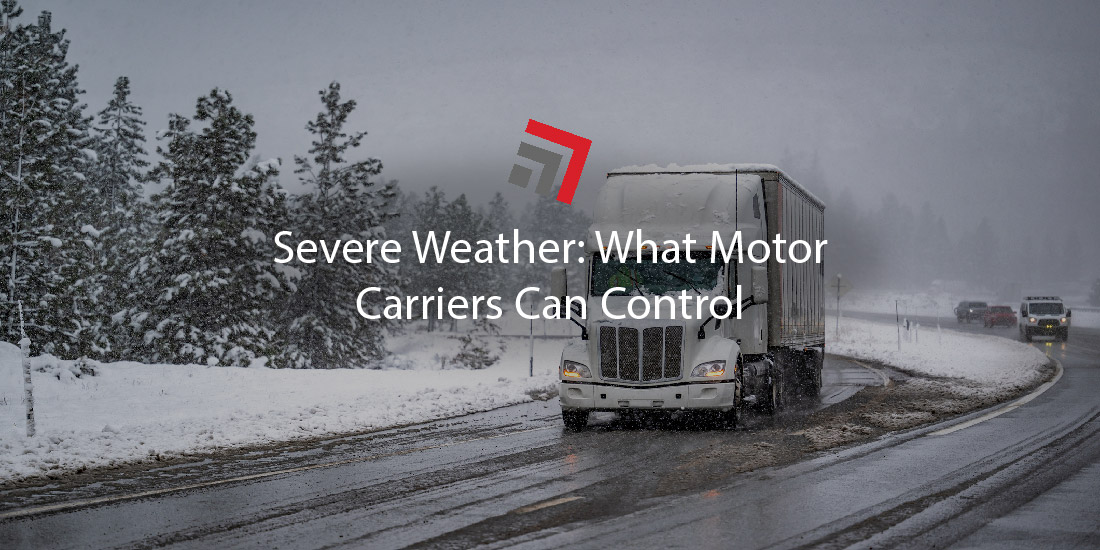Weather is transportation’s wildcard.
Last weekend, a surprise tornado cropped up on Florida’s Interstate 95, a well-trafficked lane for truck drivers. The wicked appearance of a strong event like this provides a sobering reminder of just how volatile nature can be. Even professional truck drivers can’t out-guile inclement weather.
What can motor carriers do to better ensure the safety of their fleets when conditions do take a turn for the worse?
Incorporating a culture of safety
The first thing that comes to mind for carriers: maintain the asset. By adhering to a strict regimen of vehicle inspections, like regularly checking brakes and lighting systems, asset-owning carriers gain some peace of mind knowing their trucks are in the best shape to perform under duress. Responsible ones will also winterize their fleets in the fall and implement emergency protocols for extreme weather events, like hurricanes or tornadoes.
While these are effective, and necessary, procedures to mitigate the impacts of inclement weather, Powerfleet, a wireless IoT and M2M solutions provider, asserts more can be done by carriers to protect their fleets and drivers. Director of Global Product Management Eric Frey told FleetOwner: “They’re doing the normal things that are good, such as vehicle inspection reports, making sure that braking and lighting systems are working. Those are all good things. But my opinion is that… they don’t spend enough time training their drivers.”
Powerfleet’s Frey says driver training is critical for safety during extreme weather events and a culture of safety should be incorporated into fleets.
Evaluating driver habits (The ABCs)
Frey went on to add that a carrier’s safety culture isn’t instilled by one-off training sessions, but instead, ongoing development, such as annual courses and frequent conversations, which refresh driver-employees of how they should operate when weather conditions deteriorate while on the road.
As someone who is in the digital solutions business, Frey predictably stresses data collection as the benchmark for a quality training foundation. He calls this the “ABCs”—accelerating, braking, and cornering events by truck drivers.
This approach, rather than evaluating the external risks of weather, focuses on the internal disposition of truck drivers. And, unlike Mother Nature, carriers can address and reform driver behavior. It’s a variable that they have a degree of control over.
“[The ABCs]…allow us to identify that perhaps you have an aggressive driver,” Frey said.
Carriers can evaluate their driver-employees through what Frey refers to as in-cab visibility—a form of data collection using front-facing and driver-facing cameras. The Big Brother-like system could be somewhat unsettling to drivers, but the cameras can detect distracting habits, such as wandering eyes, fatigue, eating, or smoking while behind the wheel.
The video data can then be synced with GPS data and complied into driver safety scores for carrier management to review—a program which Powerfleet offers. Armed with these insights, managers have supporting evidence to coach their drivers into developing safer driving habits.
As far as the weather is concerned, the understanding of driver tendencies play a critical role in emphasizing how dangerous these habits are when weather conditions are poor. Risky behaviors carriers may detect are even more consequential in inclement weather. For example, tailgating—a truck driver following the vehicle in front of them too closely—would be especially concerning. In snowy, icy, or rainy conditions the truck may take several times as long to stop.
That said, Frey asserts to carriers that collecting this data and initially addressing safety concerns with driver-employees before they face inclement weather can be the difference between a bad situation and a much worser one. With the latter not only putting the vehicle and load in peril, but the driver as well.
Final Thoughts
It’s been an exhausted point through most safety-related blogs, but it needs to be said: the load can always wait.
Aside from continuous driver training and savvy data collection, truck drivers must simply be aware of when it’s best to pull over in the event of a weather emergency. They need to prioritize their safety, while also keeping emergency supplies in case they lose power or run out of fuel during a severe weather event.
Contact one of our team members if you have any questions regarding this topic or any others in domestic logistics.
More blogs similar to this:



Recent Comments